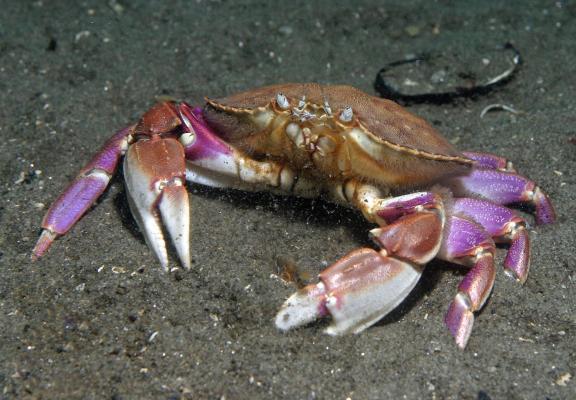Historically, the pH of the world’s oceans has remained relatively stable with only gradual fluctuations due to the natural buffering activity that occurs in seawater. However, the increase in human-produced atmospheric CO2 over the last century has led to significant increases in the amount being absorbed by the world’s oceans. Consequently, the acidity of seawater has been increasing at an unprecedented rate.
This dramatic alteration to the chemistry of the oceans has already proven harmful to the overall health of the marine environment. The ability of shellfish, corals and other marine creatures to produce and maintain their shells and skeletons has been significantly compromised.
To better understand the impact that OA will likely have on the coastal marine environment, scientists have begun using sophisticated computer software to construct models that predict future ocean pH values.
Measuring Acidification
The pH scale (“power of hydrogen”), which spans from 0 to 14, is used to measure how acidic or basic a substance is.
Acidic substances — vinegar, lemon juice and battery acid — have lower pH values (less than 7) while substances that are basic — ammonia and baking soda — have higher pH values (greater than 7). The pH scale is based on a logarithmic index, just like the Richter scale for earthquake magnitudes. This means that a very small decrease in pH actually represents a large increase in acidity.
As CO2 is absorbed, it reacts with the water to form carbonic acid. This leads to the release of hydrogen ions — charged particles that are derived from the hydrogen in the water. The greater the hydrogen ion concentration, the more acidic the substance is.
Although it is unlikely that the ocean will ever become a true acid, the term ocean acidification refers to the process of the ocean becoming gradually more acidic over time. Scientists have projected that if the current levels of CO2 emissions continue, the pH in the ocean could fall by another 0.3 to 0.4 units by the end of this century. This drop in pH would be equivalent to increasing the acidity of the oceans between 100 and 150%, or increasing the concentration of H+ ions to 2-2.5 times its current concentration.
Reducing Carbonate
Another substance found in the ocean is carbonate, which is used by many marine creatures to build their shells, skeletons and other hard parts of their bodies.
OA can limit the availability of dissolved carbonate in the ocean. The combination of increasing acidity along with a decrease in the amount of available carbonate for use by marine organisms raises significant concerns for the future health and stability of ocean ecosystems.

